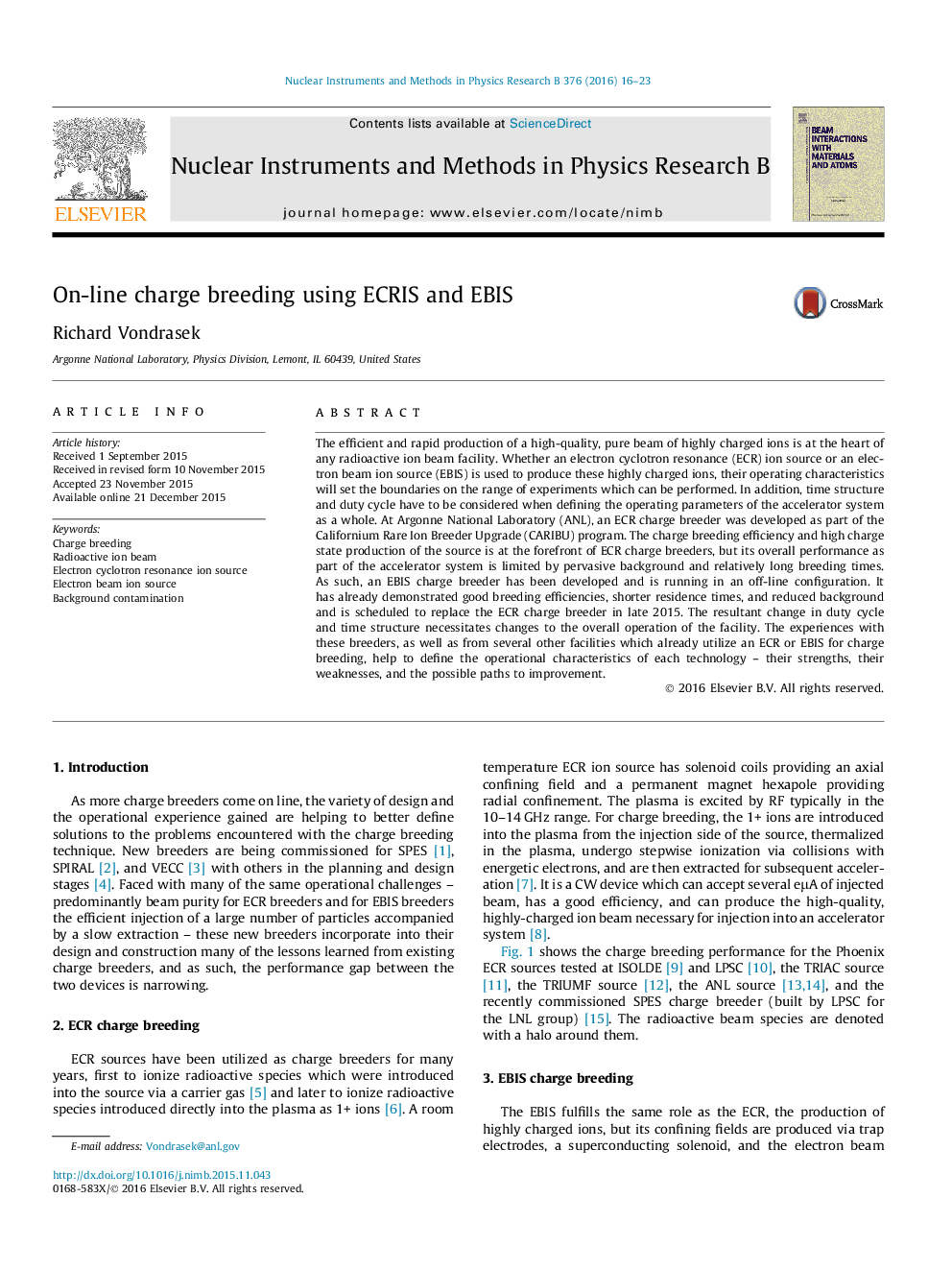| Article ID | Journal | Published Year | Pages | File Type |
|---|---|---|---|---|
| 8039703 | Nuclear Instruments and Methods in Physics Research Section B: Beam Interactions with Materials and Atoms | 2016 | 8 Pages |
Abstract
The efficient and rapid production of a high-quality, pure beam of highly charged ions is at the heart of any radioactive ion beam facility. Whether an electron cyclotron resonance (ECR) ion source or an electron beam ion source (EBIS) is used to produce these highly charged ions, their operating characteristics will set the boundaries on the range of experiments which can be performed. In addition, time structure and duty cycle have to be considered when defining the operating parameters of the accelerator system as a whole. At Argonne National Laboratory (ANL), an ECR charge breeder was developed as part of the Californium Rare Ion Breeder Upgrade (CARIBU) program. The charge breeding efficiency and high charge state production of the source is at the forefront of ECR charge breeders, but its overall performance as part of the accelerator system is limited by pervasive background and relatively long breeding times. As such, an EBIS charge breeder has been developed and is running in an off-line configuration. It has already demonstrated good breeding efficiencies, shorter residence times, and reduced background and is scheduled to replace the ECR charge breeder in late 2015. The resultant change in duty cycle and time structure necessitates changes to the overall operation of the facility. The experiences with these breeders, as well as from several other facilities which already utilize an ECR or EBIS for charge breeding, help to define the operational characteristics of each technology - their strengths, their weaknesses, and the possible paths to improvement.
Keywords
Related Topics
Physical Sciences and Engineering
Materials Science
Surfaces, Coatings and Films
Authors
Richard Vondrasek,
